Alarm.com Residential Camera Bandwidth Guidelines
Related Products
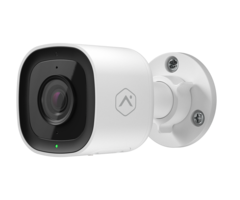
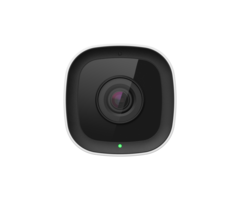
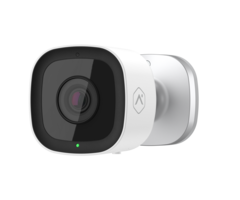

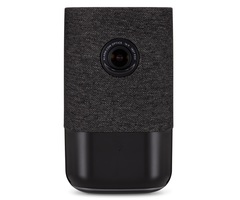
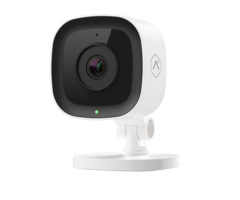
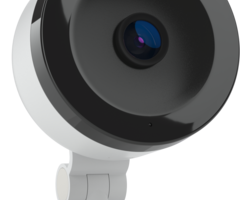
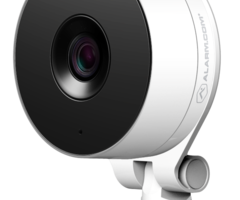
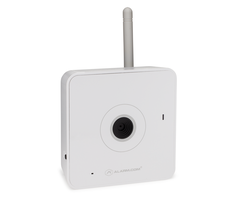
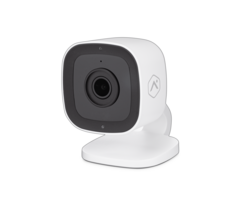
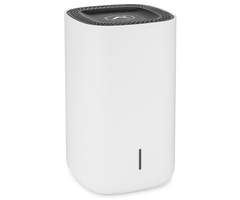
Related Categories
- 720P Security Cameras
- 1080P Security Cameras
- 720P Security Cameras
- 720P HDR Security Cameras
- 1080P Security Cameras
- 1080P HDR Security Cameras
Document Transcript
What are the internet service and bandwidth requirements for Alarm.com
video devices?
Alarm.com video devices have network requirements and recommendations that, when met, provide an
optimal
experience to the user. The requirements and recommendations include recommended types of internet connections,
router compatibility, and bandwidth and Wi-Fi signal strength
requirements.
Internet service and bandwidth requirements vary by
video device model, video device
audio integration, and whether or
not a
Stream Video Recorder (SVR) is in use.
Internet connection type
compatibility
Alarm.com video devices need an indefinite, always-on internet connection to function reliably. Some internet
connections are incompatible
due to restrictions they impose on bandwidth usage.
Internet type
Compatibility
Fiber
Compatible
Cable/broadband
Compatible
DSL
Compatible
Cellular
Not compatible
Fixed wireless internet
Not compatible
Satellite
Not compatible
Dial-up
Not compatible
Point-to-Point
Not compatible
Point-to-Multipoint
Not compatible
Router compatibility
Alarm.com wireless cameras are compatible
with most wireless routers. The quality of a
router can affect the
performance of the video devices as well as the rest of the network.
Some routers may also need firmware upgrades to
perform reliably.
https://answers.alarm.com/Partner/Installation_and_Troubleshooting/Video_Devices/General_Video_Information/What_are_th...
Updated: Fri, 05 Aug 2022 20:55:01 GMT
1 A router
broadcasting
a
secured Wi-Fi network
with a unique SSID and strong password is recommended. Open
networks or networks with a third-party portal to log in are not recommended.
For dual-band routers, verify that the 2.4 GHz
and 5 GHz bands have separate SSIDs.
Note
:
The instructions for separating
wireless bands
differ based on the router model. Please refer to the manufacturer's
guide for more information.
Bandwidth requirements
Alarm.com video devices only use
bandwidth when
the user
is streaming
live video
or SVR recorded footage, or when
the device is uploading recorded video clips.
Alarm.com video devices primarily use upload speed, as opposed to download speed. Typically, Alarm.com requires an
indefinite broadband connection of at least 0.5 Mbps of dedicated upload speed per video device. Keep in mind
that
1080p
streaming, doorbell cameras, Two-Way Audio, and
SVR integration all require
additional bandwidth.
Note
: Dedicated upload speed refers to
bandwidth only used by the video devices, so other connected devices (e.g.,
computers, smartphones, gaming consoles, etc.)
require additional bandwidth on the internet connection.
Commercial and large residential systems
Some businesses and larger homes require more bandwidth based on how the video devices are used. For more details
about commercial and large residential bandwidth recommendations
(i.e., locations with SVRs and PoE
video
cameras),
see
Commercial video internet bandwidth guidelines
.
Minimum bandwidth for residential
video devices
The requirements listed on this page are based on a single user viewing one video device at a time.
The following limits describe where the audio and video streams start to become choppy under ideal environmental
conditions (i.e., the Wi-Fi signal strength is strong and not blocked by walls or other objects).
https://answers.alarm.com/Partner/Installation_and_Troubleshooting/Video_Devices/General_Video_Information/What_are_th...
Updated: Fri, 05 Aug 2022 20:55:01 GMT
2 Video device
Required bandwidth
'20/'21
0.25 Mbps —
Standard Resolution & Quality
'22
series
1.5 Mbps —
Standard Resolution & Quality
0.5
Mbps —
Reduced Resolution & Quality
ADC-V523/523X
2
Mbps — Any
Resolution & Quality
ADC-V723/723X
2
Mbps — High
Resolution & Quality
1.5 Mbps — Standard and Reduced
Resolution & Quality
ADC-V515
2.5
Mbps — High
Resolution & Quality
2
Mbps —
Standard Resolution & Quality
1.5
Mbps —
Reduced Resolution & Quality
ADC-V724/724X
2
Mbps — Any
Resolution & Quality
ADC-VS123
Up to 2 Mbps depending on the connected camera
For commercial video device bandwidth requirements, see
Commercial video internet bandwidth guidelines
.
https://answers.alarm.com/Partner/Installation_and_Troubleshooting/Video_Devices/General_Video_Information/What_are_th...
Updated: Fri, 05 Aug 2022 20:55:01 GMT
3 Minimum bandwidth for residential
video devices using Two-Way Audio
Camera model
Required bandwidth
ADC-V521IR
1.5 Mbps — Highest Setting
0.75
Mbps — Reduced
Setting
ADC-V522IR and ADC-V622
2 Mbps — Highest Setting
1 Mbps — Reduced
Setting
ADC-V523/523X
2
Mbps — Any
Resolution & Quality
ADC-V515
2
Mbps —
Standard Resolution & Quality
1.5
Mbps —
Reduced Resolution & Quality
ADC-V724/724X
2
Mbps — Any
Resolution & Quality
SkyBell Doorbell Camera
(ADC-VDB101/102/105/106/
105x/106x)
2 Mbps —
Standard Resolution & Quality
Alarm.com Video Doorbell (ADC-VDB770)
2.5 Mbps —
Standard Resolution & Quality
Recommended bandwidth for an SVR
When using a
Stream Video Recorder (SVR), it is recommended to meet the same minimum bandwidth requirements as
the video camera live stream it is recording.
For playback speeds higher than normal speed,
the bandwidth requirements
increase with
the playback speed. For
more information about the bandwidth requirements of SVRs to stream remote playback, see
Commercial video internet
bandwidth guidelines
.
Example
: To play back four ADC-VC726s
remotely at normal speed, the user's
upload speed should be
at least 6 Mbps.
If the playback speed is 2X,
the user's
upload speed should be
at least 12
Mbps.
Troubleshoot bandwidth
If the customer’s upload bandwidth is lower than recommended, the cameras may still work
but the live view may look
jumpy
since the frame rate is reduced as a result of the upload bandwidth limitation.
To determine how many video
https://answers.alarm.com/Partner/Installation_and_Troubleshooting/Video_Devices/General_Video_Information/What_are_th...
Updated: Fri, 05 Aug 2022 20:55:01 GMT
4 devices an internet connection can support, perform a web-based speed test.
For more information about performing an
Internet speed test, see
Perform an Internet speed test
.
If the internet bandwidth is too low, the customer can contact their internet service provider to find out how to increase
their upload bandwidth.
Required signal strength for video devices
A minimum of 66% Normalized Wireless Signal Strength (NWSS) is recommended for video devices.
For more
information about how to request the NWSS
from the video device, see
Request the wireless signal strength of
a video
device
.
Signal rating
Normalized signal strength
Description
Excellent - green
79% and higher
Recommended range
Good - yellow
78% through 66%
Acceptable in some situations, but
the connection might be intermittent
Poor - red
65% and lower
Not recommended
To learn more about how NWSS is determined and how it compares to other signal strength metrics, see
View a video
device's Wi-Fi history (signal level and transmission rate)
.
Additional signal strength information
The materials the signal passes through and the physical location of the video device affect the signal strength.
If there
are walls or any obstructions, the wireless range is decreased. Verify the signal strength meets the minimum
recommendation
to help
video devices
operate properly.
While a camera can still function below the recommended signal strength rating, having a signal strength below the
recommended minimum
can reduce the overall performance of live video. The affected video devices
may
also
experience unexpected behavior with the camera's functionality. Wi-Fi extenders can help improve wireless signal
strength.
https://answers.alarm.com/Partner/Installation_and_Troubleshooting/Video_Devices/General_Video_Information/What_are_th...
Updated: Fri, 05 Aug 2022 20:55:01 GMT
5 Where is Wireless Quality and
Wireless Link Quality?
Wireless quality and wireless link quality have been removed in order to simplify troubleshooting by focusing on a few
key metrics: Normalized Wireless Signal Strength, Signal Level, Transmission Rate, and Signal to Noise ratio.
https://answers.alarm.com/Partner/Installation_and_Troubleshooting/Video_Devices/General_Video_Information/What_are_th...
Updated: Fri, 05 Aug 2022 20:55:01 GMT
6
- Uploaded
